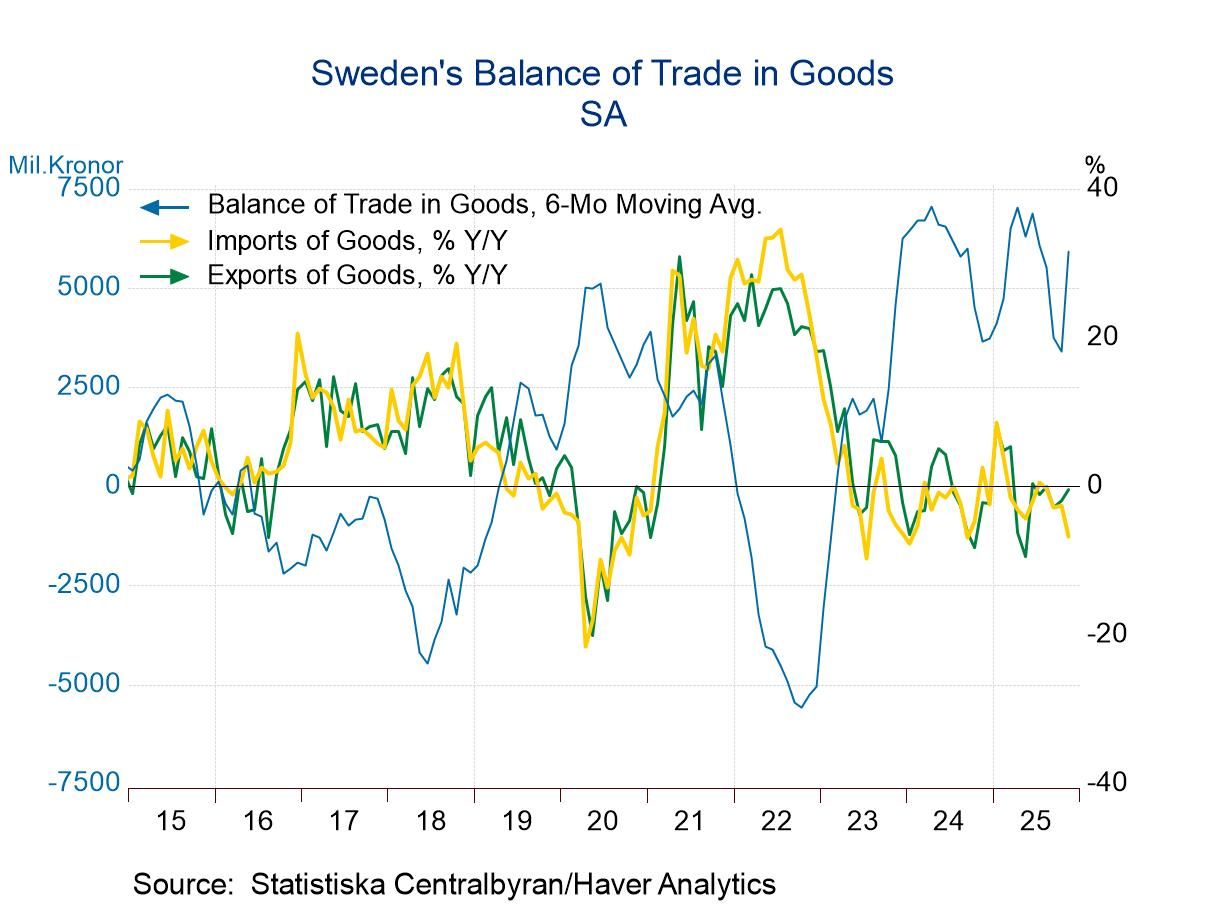U.S. ISM Services PMI Rebounds in January from a Contraction Level in December
Summary
- 55.2 in Jan. vs. 49.2 in Dec., showing expansions starting June ’20 except Dec. ’22.
- Increases in all the sub-indexes: business activity (60.4 vs. 53.5) expands for 32 straight months while new orders (60.4 vs. 45.2), employment (50.0 vs. 49.4) and supply deliveries (50.0 vs. 48.5) expand following their Dec. contractions.
- Prices index, still at a high level, falls to a two-year-low 67.8.


The U.S. ISM Services PMI was at 55.2 in January, up from a contraction-level 49.2 in December but marginally down from 55.5 in November, according to the Institute for Supply Management. The January reading was modestly below 60.4 last January and a 67.6 peak in November 2021. The 12-month average was 55.7, reflecting consistently strong growth in the U.S. services sector. The Action Economics Forecast Survey had expected 50.4 for January.
Haver Analytics constructs a composite index combining the services index and the manufacturing reading. This index was at 54.4 in January, up from 49.1 in December but slightly down from 54.8 in November. These readings were down from 60.1 last January and a 66.9 high in November 2021. These series date back to July 1997.
In the latest services survey, the business activity index rebounded to 60.4 in January from 53.5 in December, indicating business activity expanded for 32 consecutive months at a faster pace. The index was below 61.3 last January and a 70.4 high in November 2021. Twenty-six percent of respondents (NSA) reported higher activity in January while a lessened 19.1% reported an activity decline. The new orders index jumped to 60.4 in January, the highest reading since August, after falling to a contraction-level 45.2 in December; the index was below 62.2 last January and a record 69.2 in October 2021. An increased 26.6% of respondents (NSA) reported more orders while 17.9% reported a decline. The employment index rebounded to the 50.0 dividing-expansion line in January from a contraction-level 49.4 in December; the index was slightly down from 52.2 last January. Twenty percent of respondents (NSA) indicated higher employment while an increased 24.6% reported it lower. The supplier deliveries index (NSA) increased to 50.0 in January after falling to 48.5 in December, but it was well below 65.8 last January and 75.7 in November 2021. A 10.5% of respondents reported faster delivery speeds while 10.4% reported slower speeds.
The prices index declined to a still-high 67.8 in January, the lowest level since January 2021, from 68.1 in December; the index was well below 82.9 last January and a record 84.5 in December 2021. Thirty-nine percent of respondents (NSA) reported price increases while a steady 7.9% reported price decreases. Nearly fifty-three percent reported stable prices.
The new export orders index increased to 59.0 in January from a contraction-level 47.7 in December, indicating expansion in new export orders for the first time since September. The backlog of orders index edged up 1.4 pts. to 52.9 in January after six straight monthly drops. The inventory change index rebounded to 49.2 from 45.1, indicating that inventories contracted in January for the eighth consecutive month following four successive months of expansion. The imports index inched up to 53.0 in January after declining to 52.7 in December, registering the fifth straight monthly expansion. These series are not seasonally adjusted and not included in the ISM Services PMI total.
The ISM figures are available in Haver's USECON database, with additional detail in the SURVEYS database. The expectations figure from Action Economics is in the AS1REPNA database.


Winnie Tapasanun
AuthorMore in Author Profile »Winnie Tapasanun has been working for Haver Analytics since 2013. She has 20+ years of working in the financial services industry. As Vice President and Economic Analyst at Globicus International, Inc., a New York-based company specializing in macroeconomics and financial markets, Winnie oversaw the company’s business operations, managed financial and economic data, and wrote daily reports on macroeconomics and financial markets. Prior to working at Globicus, she was Investment Promotion Officer at the New York Office of the Thailand Board of Investment (BOI) where she wrote monthly reports on the U.S. economic outlook, wrote reports on the outlook of key U.S. industries, and assisted investors on doing business and investment in Thailand. Prior to joining the BOI, she was Adjunct Professor teaching International Political Economy/International Relations at the City College of New York. Prior to her teaching experience at the CCNY, Winnie successfully completed internships at the United Nations. Winnie holds an MA Degree from Long Island University, New York. She also did graduate studies at Columbia University in the City of New York and doctoral requirements at the Graduate Center of the City University of New York. Her areas of specialization are international political economy, macroeconomics, financial markets, political economy, international relations, and business development/business strategy. Her regional specialization includes, but not limited to, Southeast Asia and East Asia. Winnie is bilingual in English and Thai with competency in French. She loves to travel (~30 countries) to better understand each country’s unique economy, fascinating culture and people as well as the global economy as a whole.






